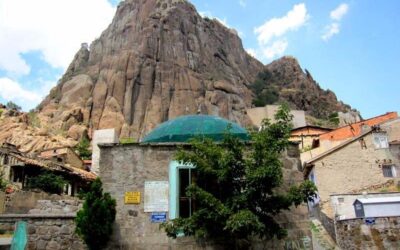Alaaddin Keykubad Mosque
- Completed in 1220, the Alaeddin Camii is the oldest known Seljuk Musjid in Turkey. It is built on the hill that forms the citadel of Konya. Its pointed arch and round domes atop two tombs are notable features in Konya’s cityscape. Except for Izzeddin Keykawus, all the Seljuk sultans after 1156 are buried in the complex.
- The Musjid has an oblong, hypostyle plan influenced by Arabic classical architecture but is very much a Seljuk building. It consists of two major rebuilding campaigns by Sultan Izzeddin Keykawus and Sultan Alaeddin Keykawus.
- The entrance portal is decorated with alternating grey and white marble and intricately interlocking stones. The building itself is made of various stone types, many reused from Byzantine buildings.
- Inside, the hall is divided into sections by 42 columns reused from antique buildings. These support the vaulted stone ceiling. The ebony minbar dates back to 1155 and is probably the only surviving element from the earliest Musjid. The mihrab, built by Kerimeddin Erdim Shah, is tiled in three shades of blue.
- Inscriptions in various spots of the Musjid indicate that the construction of the western wing with the domed bay before the mihrab and aisles, as well as the second tomb in an octagonal layout, started during the reign of Sultan Izz al-Din Kay Qawus I and took its final form during the reign of Ala al-Din Kay Qubadh I. The westward expansion of the Musjid was related to changes in the layout of the Seljuk Palace on Alaeddin Hill. However, restorations and alterations after the thirteenth century removed some original structural features and decorations.








